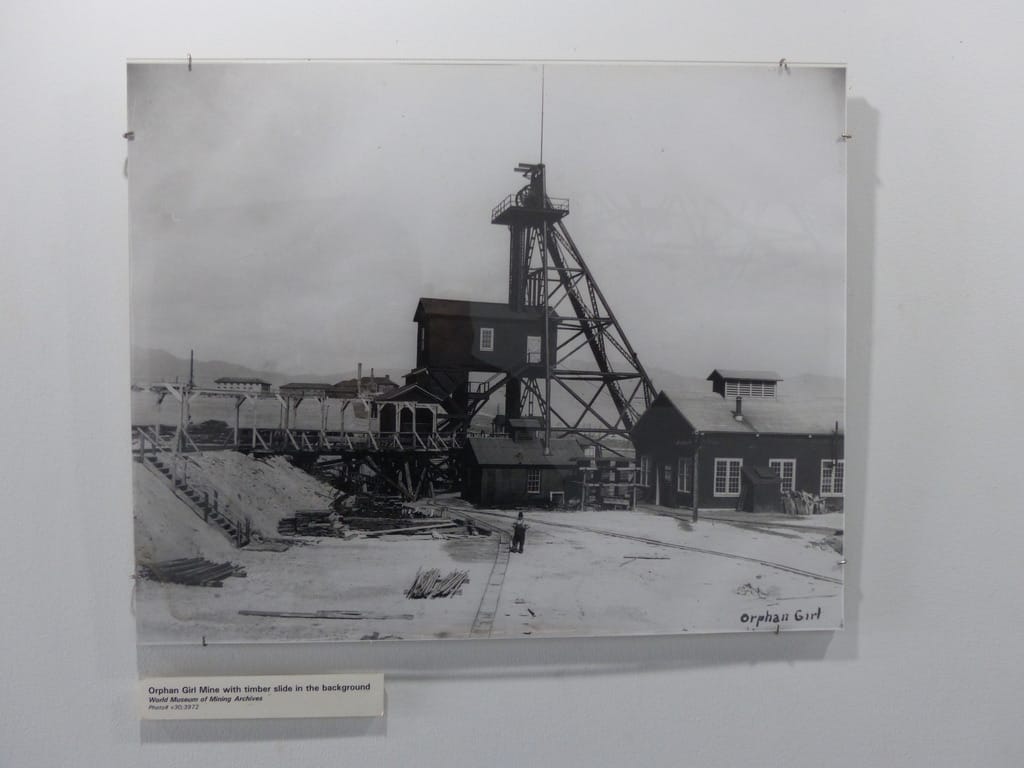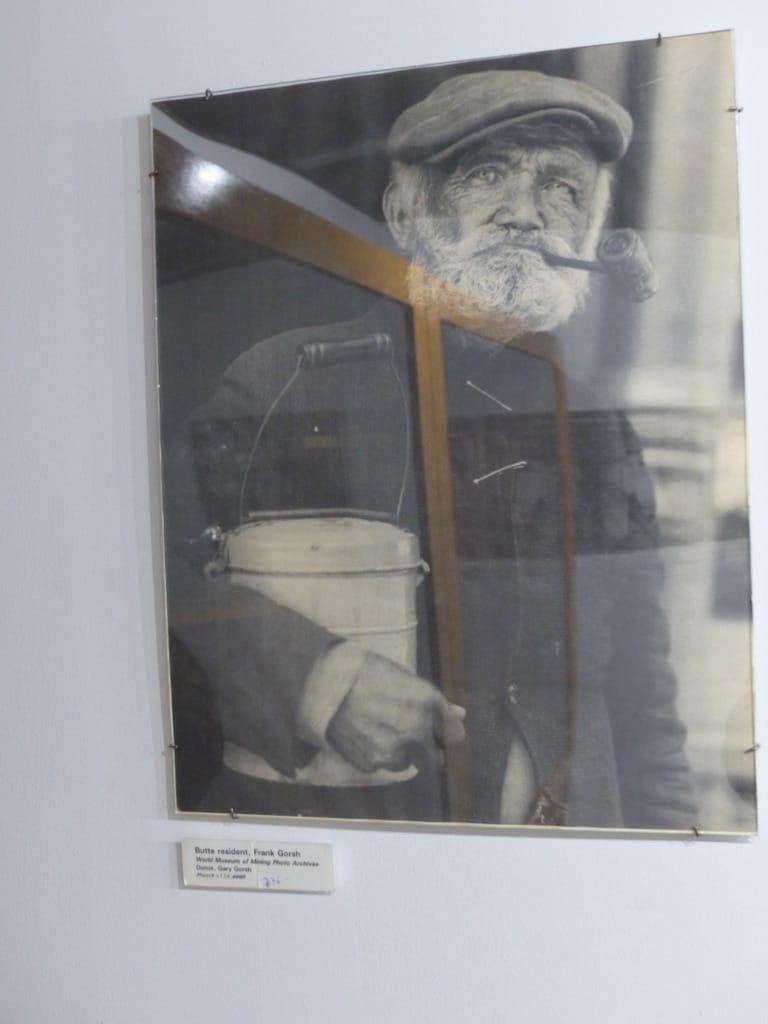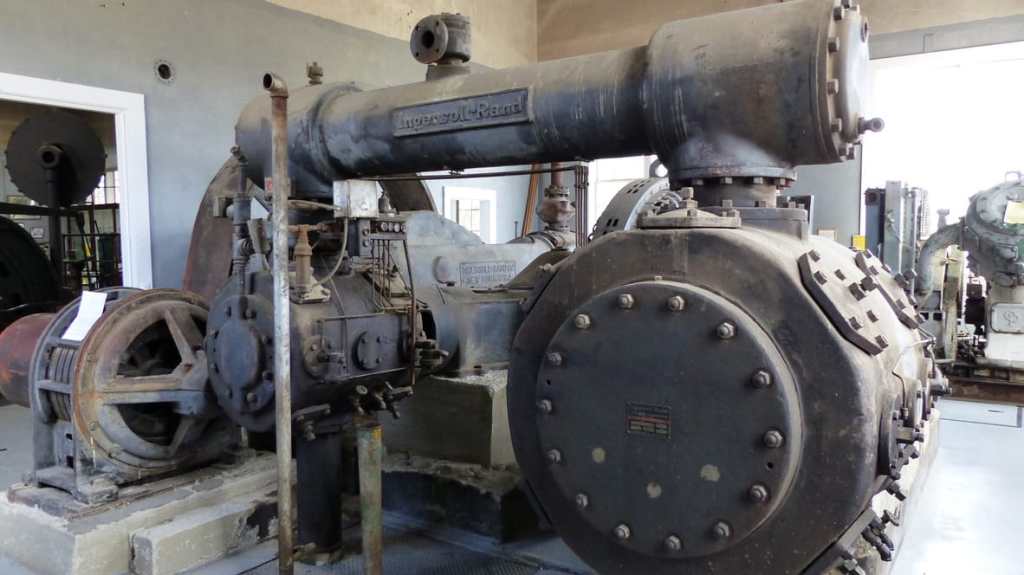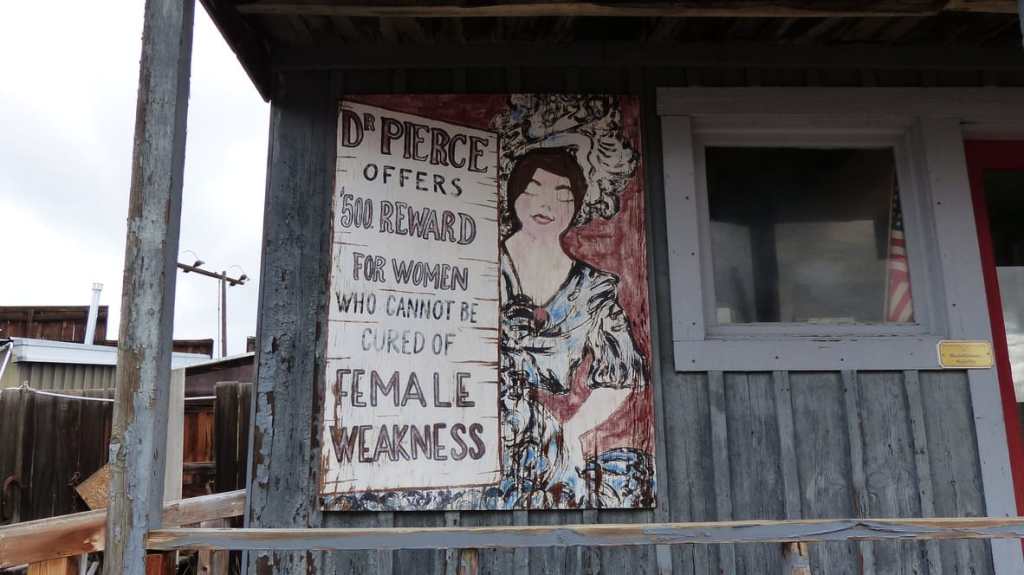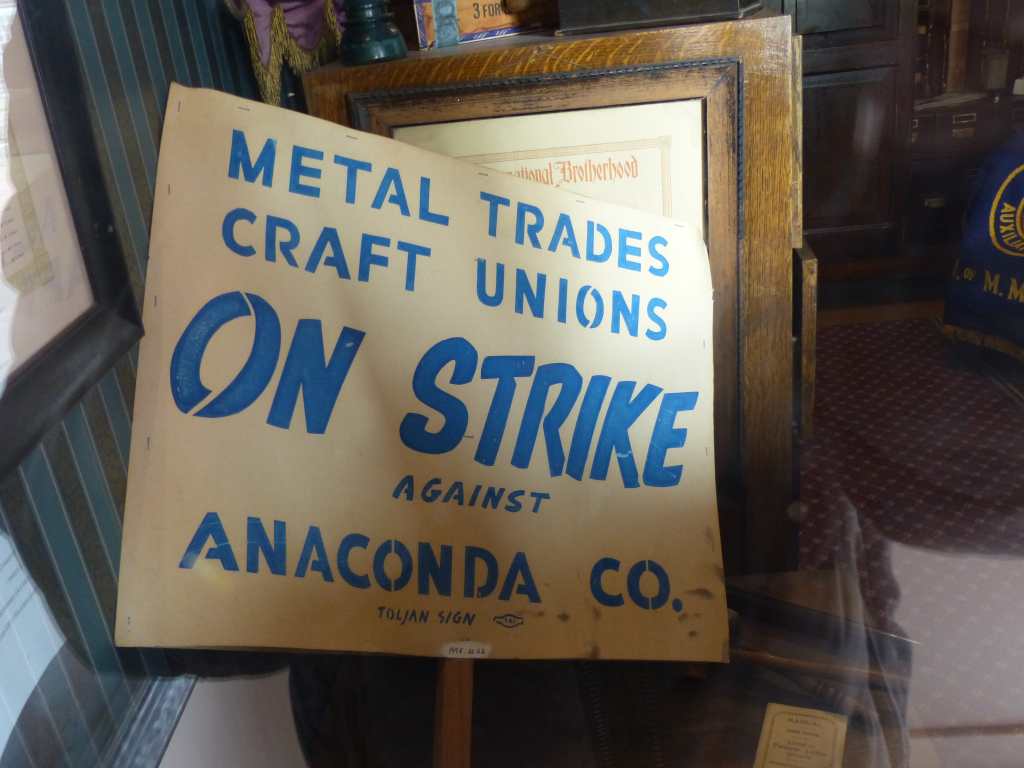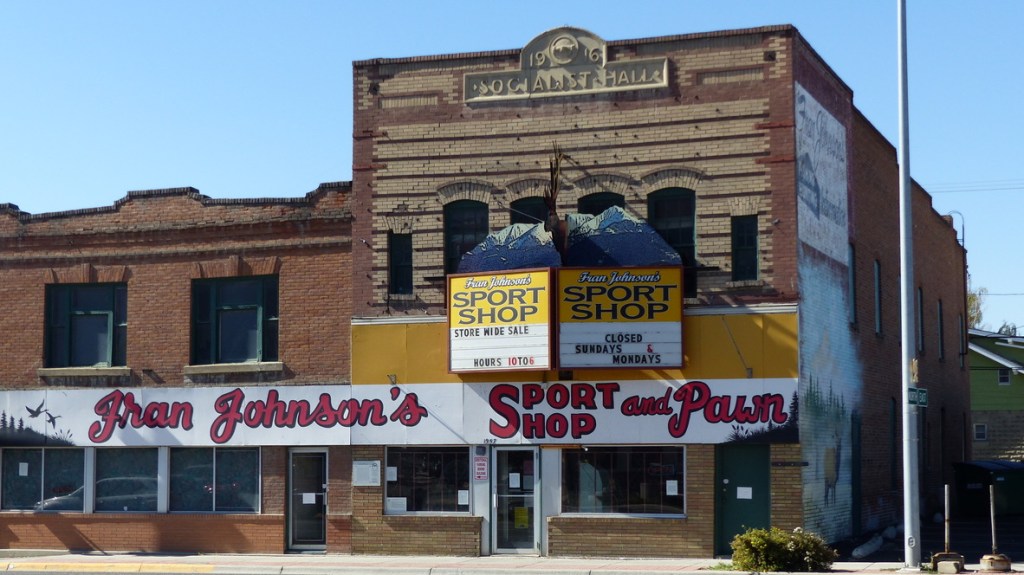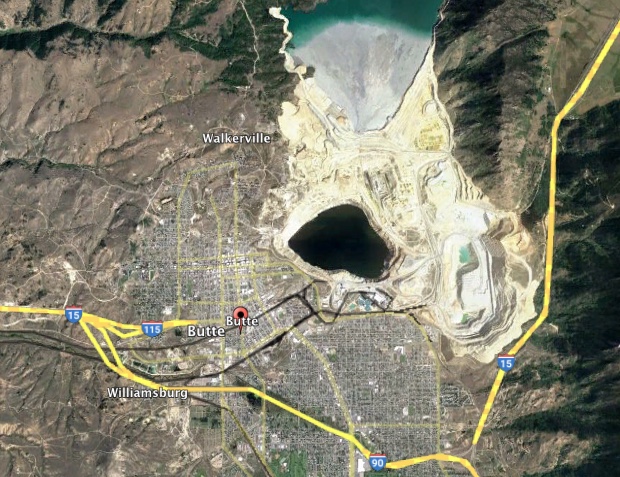
September 19 through September 21, 2021
Butte Montana is the seat of Silver Bow County. The current population is 36,000 yet at the height of mining in the early 1900’s as many as 100,000 folks lived in Butte. The city began as a silver mining area. Not too long after a huge amount of copper was discovered and emphasis was switched to copper mining. The city has 14 head frames, each marking an individual mine.
In and around Downtown Butte– Note the Mining Headframes
Established in 1864 as a mining camp in the northern Rocky Mountains on the Continental Divide, Butte experienced rapid development in the late nineteenth century, and was Montana’s first major industrial city. In its heyday between the late nineteenth and early twentieth centuries, it was one of the largest copper boomtowns in the West. Employment opportunities in the mines attracted Asian and European immigrants, particularly the Irish. As of 2017, Butte has the largest population of Irish Americans per capita of any city in the United States.
World Museum of Mining at Orphan Girl Mine Site
Butte was also the site of various historical events involving its mining industry and active labor unions and Socialist politics, the most famous of which was the Labor Riot of 1914. Despite the dominance of the Anaconda Mining Company, Butte was never a company town. Other major events in the city’s history include the 1917 Speculator Mine disaster, the largest hard rock mining disaster in world history.
Over the course of its history, Butte’s mining and smelting operations generated in excess of $48 billion worth of ore with the resultant environmental implications for the city: The upper Clark Fork River, with headwaters at Butte, is the largest Superfund site in the United States, and the city is also home to the Berkeley Pit, a superfund site unto itself.

In the 21st century, efforts at interpreting and preserving Butte’s heritage address both the town’s historical significance and the continuing importance of mining to its economy and culture. The city’s Uptown Historic District, on the National Register of Historic Places, is one of the largest National Historic Landmark Districts in the United States, containing nearly 6,000 contributing properties. The city is also home to Montana Technological University.

The influence of copper mining in Butte came from three men. These three “Copper Kings“, William A. Clark,[19] Marcus Daly, and F. Augustus Heinze constantly fought over control of the local mining industry with Daly and his original company, Anaconda Copper emerging as a monopoly. The company expanded into the fourth largest company in the world by the late 1920’s.
Copper ore mined from the Butte mining district in 1910 alone totaled 284,000,000 pounds. At the time, Butte was the largest producer of copper in North America and rivaled in worldwide metal production only by South America. The same year, in excess of 10,000,000 troy ounces of silver and 37,000 troy ounces of gold were also discovered. The amount of ore produced in the city earned it the nickname “The Richest Hill on Earth.” With its large workforce of miners performing in physically dangerous conditions, Butte was the site of active labor union movements, and came to be known as “the Gibraltar of Unionism.
From 1880 through 2005, the mines of the Butte district have produced more than 9.6 million metric tons of copper, 2.1 million metric tons of zinc, 1.6 million metric tons of manganese, 381,000 metric tons of lead, 87,000 metric tons of molybdenum, 715 million troy ounces (22,200 metric tons) of silver, and 2.9 million ounces (90 metric tons) of gold.
Fourteen headframes still remain over mine shafts in Butte, and the city still contains thousands of historic commercial and residential buildings from the boom times, which, especially in the Uptown section, give it an old-fashioned appearance. We are fortunate to visit the World Mining Museum located at the site of the Orphan Girl Mine. We learned a lot about mining. We also learned that 2500 miners from 1880 to 1954 lost their lives in the mines.
We seldom eat out so on our last day, Monday, in Butte. We feel the need for Chinese food. The Pekin Noodle Parlor is the oldest continuous operating Chinese restaurant in the US. During the 1980’s when the mining industry was in downturn some folks would try to skip paying for their meal. The restaurant is on the second floor. The owner, Danny Wong, would order the front door locked and he would stand at the top of the stairs wielding a bayonet, trapping the offenders. He’d say “Pay or wash dishes!” Mr. Wong called it Pekin Jail. The business passed from grandfather to grandson. Mr. Wong said that the basement that used to be a bar and casino at the height of mining is full of memorabilia from that era.


We pull up to the front door and discover it opens on Wednesday at 5pm. Nuts! OK, we’ll find a Mexican food joint over in the newer part of town. There’s a Taco Bell- no dining in due to staff shortage and the drive through line is long. Jil says there’s a Mexican restaurant across the street- a sign on the door says the staff was given the day off due to staffing shortages. So we amble back to El Taco. The restaurant is locally owned. Food is really cheap! Wow! And that’s because Jil’s bean burrito is made with a taco sized tortilla and so is my asada burrito. They are about a quarter the size of a normal burrito and the contents miss the mark as far as Mexican flavor. Oh well, at least we tried…….Maybe we’ll have better luck in the future. I still have a hankerin’ for Chinese.


Our Lady of the Rockies stands on the Continental Divide








